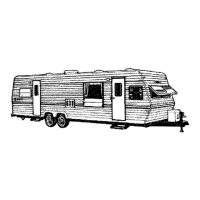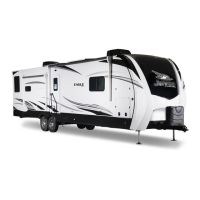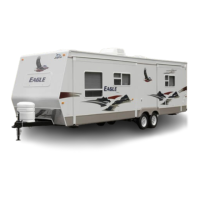157
Toilet
The toilet is ecient and easy to operate. Prior to using the sanitation system, it is strongly
recommended to ush the toilet several times to release sucient water into the holding
tank. Generally, more water is required only when ushing solids.
The toilet system will perform better when water is run for ten to fteen seconds after ush-
ing to ensure that the waste will proceed to the bottom of the tank.
If there is not a sucient amount of water used during ushing, the waste materials may not
evacuate properly from the drain line to the tank. Clogged tanks and pipes could eventually
occur. For added convenience and better sanitation system performance, it is advisable to
always have four to six inches (10 - 15 cm) of water in the toilet. It is important to add
enough water to prevent solid waste buildup. The following guidelines will help to prevent
solid waste buildup.
1. Release one to two quarts (1 or 2 liters) of water into the toilet bowl.
2. Follow the directions on your (approved RV) toilet chemical bottle (customer sup-
plied), by placing the recommended quantity of holding tank chemical into the toilet
bowl.
3. Flush the toilet and allow at least two gallons (8 liters) of water to ow into the holding
tank.
The toilet should be cleaned regularly for maximum sanitation and operational eciency.
For detailed information refer to the manufacturer’s operator manual.
It is important to prevent solid waste buildup. Follow the toilet manu-
facturer’s recommended instructions each time after emptying the black
water holding tank.
To prevent help toilet blockage, always use RV grade single-ply toilet pa-
per. Do not ush paper towels, diapers, sanitary napkins or other foreign
objects down the toilet.
Do not use chlorine (undiluted) or caustic chemicals, such as laundry
bleach or drain opening types, in the toilet system. These products dam-
age the seals in toilets and dump valves.
When the recreation vehicle is connected to city sewer and the gate valves are
open.
When ambient temperatures rise and remain above freezing.
No maintenance on the heaters is required, only a periodic inspection for loose wires, dam-
age, etc. For additional detailed information, refer to the tank heater manufacturer’s user
guide.
Free draining is never recommended, especially in cold
weather use.
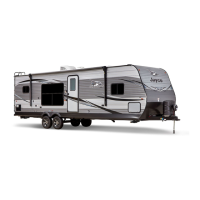
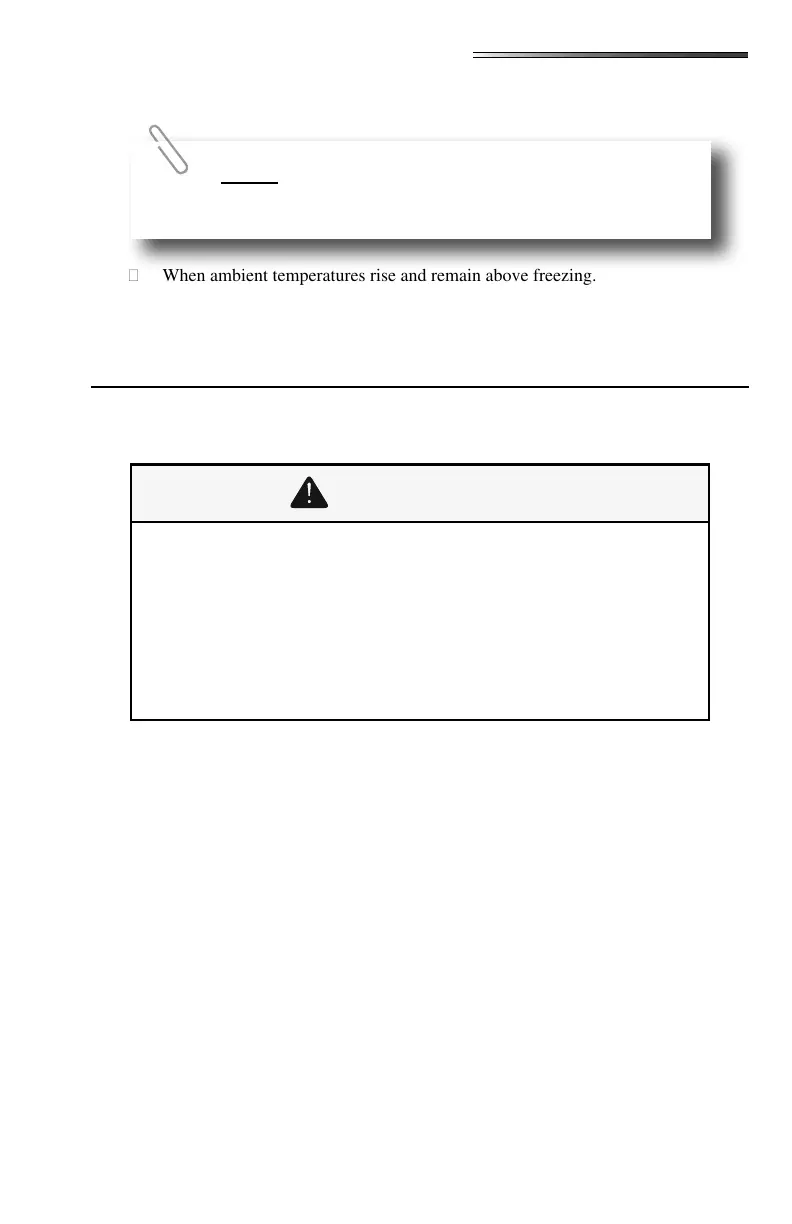